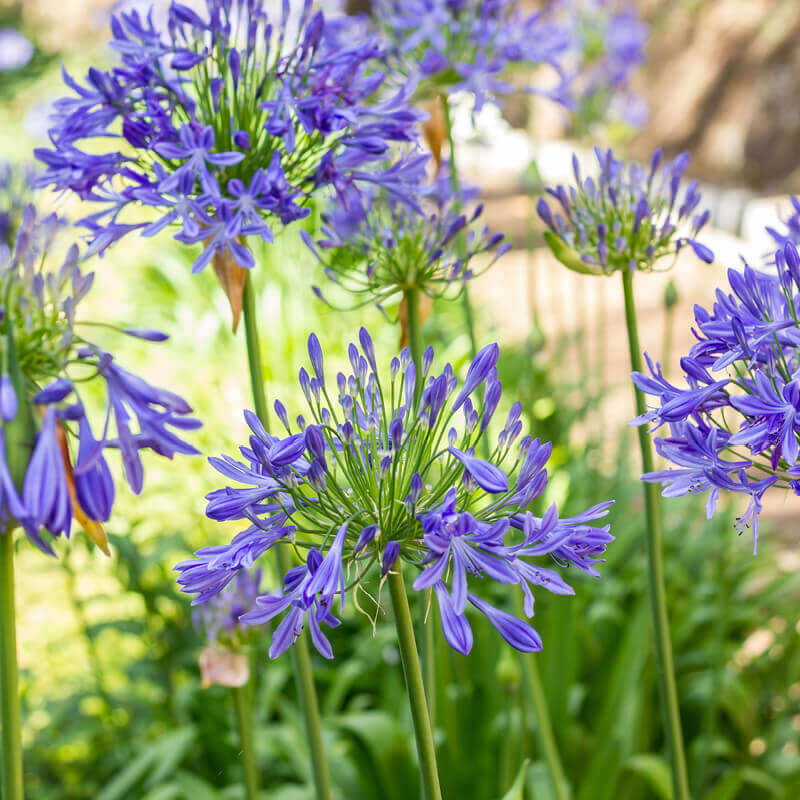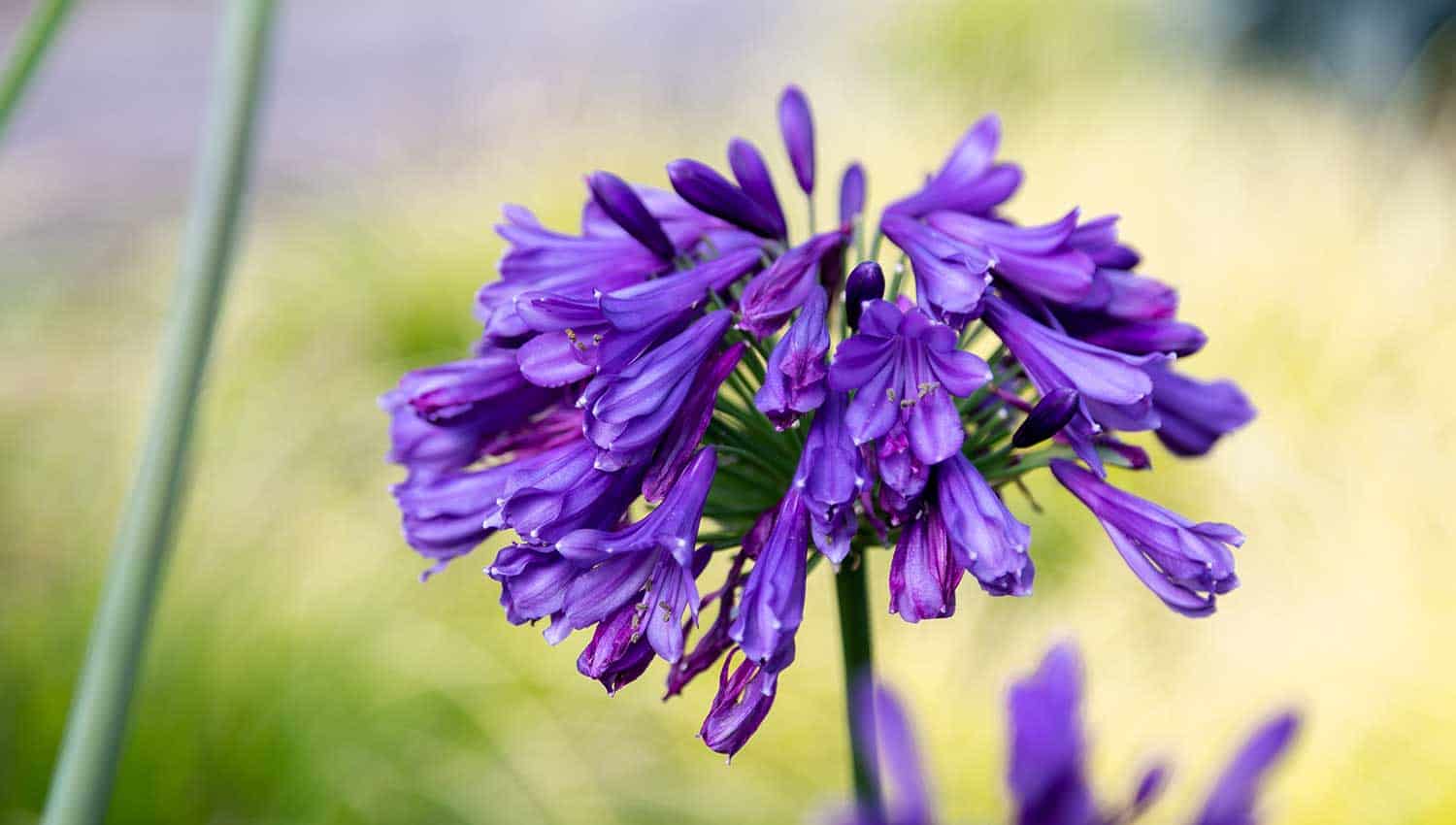Seasonal Agapanthus Care: Planning For Winter and Summertime
Seasonal Agapanthus Care: Planning For Winter and Summertime
Blog Article
Letting Loose the Secret to Effective Agapanthus Cultivation: Tips and Techniques for a Flourishing Garden
In the realm of horticulture, growing agapanthus successfully calls for a calculated strategy that encompasses various facets of plant treatment. By comprehending the nuances of agapanthus farming, one can produce an environment where these plants thrive and flower perfectly.
Planting Agapanthus: Finest Practices
When growing Agapanthus, correct dirt preparation is crucial for making certain successful development and advancement of these lovely flowers. Agapanthus, generally referred to as Lily of the Nile or African lily, flourishes in well-draining dirt with a slightly acidic to neutral pH level - Agapanthus. Prior to growing, it is critical to amend hefty clay dirts with raw material such as compost or peat moss to enhance drainage and give crucial nutrients for the plants
To plant Agapanthus, choose an area that obtains complete sunlight to partial color, as this will promote healthy growth and abundant flowering. Dig an opening twice the diameter of the plant's root round and position the Agapanthus at the very same depth it was formerly expanding. Carefully backfill the hole with dirt, weighing down strongly to remove any kind of air pockets around the origins.
Water the newly planted Agapanthus extensively and proceed to keep the soil equally wet, particularly throughout the plant's active growing season. Agapanthus. Using a well balanced fertilizer once a month can additionally sustain the plant's growth and flowering. By complying with these best techniques for growing Agapanthus, you can create a stunning screen of these exciting flowers in your garden
Ideal Dirt Conditions for Agapanthus
For optimal development and blooming success of Agapanthus plants, making certain the soil conditions are suitable is crucial. Agapanthus likes dirt that is abundant in nutrients, so including a well balanced plant food throughout the growing period can advertise healthy and balanced development and dynamic flowers.

Watering and Feeding Tips
To guarantee healthy development and lively flowers, correct watering and fertilizing strategies are vital for successful Agapanthus cultivation. Agapanthus plants benefit from routine watering, particularly throughout the expanding season. It is recommended to water deeply when a week, making sure the soil is wet yet not soaked. Throughout heat or in pots, more regular watering might be needed to avoid the soil from drying out completely.
When it concerns feeding Agapanthus, a well balanced fertilizer with equal parts nitrogen, phosphorus, and potassium can be applied in the springtime to promote healthy and balanced development and flowering. Slow-release plant foods are perfect for supplying nutrients slowly over an extended period. Stay clear of over-fertilizing, as this can lead to extreme foliage growth at the expense of blooms.
Furthermore, integrating natural matter like garden compost right into the soil can boost nutrient levels and boost dirt framework, assisting in the overall health and wellness of the Agapanthus plants. By complying with these watering and feeding tips, garden enthusiasts can ensure their Agapanthus plants thrive and create magnificent displays of blossoms.
Pruning and Deadheading Methods
Proper trimming and deadheading techniques play a critical function in maintaining the wellness and looks of Agapanthus plants, complementing the essential techniques of watering and feeding for effective cultivation. Trimming Agapanthus entails eliminating spent flower heads, yellowing or dead fallen leaves, and total shaping of the plant to advertise far better growth. Deadheading, the procedure of getting rid of discolored blossoms, not just improves the plant's appearance yet additionally encourages additional blooming.
When deadheading Agapanthus, it is suggested to trim off the flower stem at the base utilizing sharp, clean shears. This procedure reroutes the plant's energy from seed manufacturing back into root and foliage growth, promoting a much healthier continue reading this and extra robust plant. Routine deadheading can expand the blooming duration of Agapanthus and prevent self-seeding, which can lead to congestion.
In terms of trimming, Agapanthus generally take advantage of a light trim after blossoming to clean the plant and motivate fresh growth. Reducing the invested flower stems and removing any kind of damaged or dead vegetation aids maintain the plant's vigor and overall look. Nonetheless, it is necessary to prevent reducing right into the crown of the plant, as this can deteriorate its wellness.

Protecting Agapanthus From Vermins and Diseases
Executing effective pest and illness monitoring techniques is crucial to guarding the wellness and vigor of Agapanthus plants in cultivation. Agapanthus are generally hardy plants, however they can still succumb to different pests and diseases otherwise properly looked after. One common insect that affects Agapanthus is the Agapanthus borer, a caterpillar that tunnels into the plant, creating damage to the flowers and fallen leaves. To avoid invasions, routine evaluation of the plants is essential. If borers are found, they can be manually eliminated, or insecticidal soap can be utilized as a control step.
Along with insects, Agapanthus are vulnerable to diseases such as origin rot and fungal leaf areas. These concerns can commonly be protected against by guaranteeing proper drainage and avoiding overwatering. Impacted components of the plant ought to be without delay removed to protect against further spread if indications of illness show up. Fungicides may also be utilized as a therapy measure, following the manufacturer's guidelines meticulously. By remaining vigilant and addressing parasite and disease concerns immediately, gardeners can aid their Agapanthus prosper and prosper.

Conclusion
Finally, successful growing of agapanthus calls for appropriate planting techniques, optimal soil problems, ample watering and feeding, normal pruning and deadheading, and security from insects and illness. By adhering to these techniques and tips, garden enthusiasts can make sure a prospering yard filled with gorgeous agapanthus blooms. Agapanthus. Keep in mind to preserve consistent treatment and attention to information to promote the wellness and longevity of these sensational plants
When planting Agapanthus, appropriate soil preparation is necessary for ensuring successful development browse around this web-site and growth of these beautiful flowers.Water the freshly grown Agapanthus extensively and proceed to navigate here maintain the dirt evenly damp, particularly during the plant's active expanding season.For ideal growth and flowering success of Agapanthus plants, ensuring the dirt conditions are excellent is crucial. When transplanting or planting Agapanthus, ensure the dirt is well-prepared to provide the necessary foundation for the plants to develop themselves efficiently. One common parasite that affects Agapanthus is the Agapanthus borer, a caterpillar that passages right into the plant, creating damages to the blossoms and fallen leaves.
Report this page